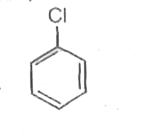What effect should the following resonance of vinyl chloride have on its dipole moment?
CH2=CH−Cl⇔¯¯¯CH2−CH=Cl+
To analyze the effect of resonance on the dipole moment of vinyl chloride (CH₂=CH-Cl), we can follow these steps:
Step 1: Identify the structure of vinyl chloride
Vinyl chloride is an alkene with the formula CH₂=CH-Cl. It consists of a vinyl group (CH₂=CH-) attached to a chlorine atom.
Step 2: Draw the resonance structures
The resonance structure of vinyl chloride can be represented as follows:
1. The original structure: CH₂=CH-Cl
2. The resonance structure: CH₂-CH=Cl⁺
In the resonance structure, the double bond between the carbon atoms shifts, and the chlorine atom carries a positive charge while the other carbon atom carries a negative charge.
Step 3: Analyze the dipole moment
The dipole moment (μ) is defined as the product of the charge (q) and the distance (d) between the charges:
μ=q×d
In the original structure, the dipole moment is influenced by the electronegativity of chlorine, which pulls electron density toward itself, creating a dipole.
Step 4: Consider the effect of resonance
When resonance occurs, the positive and negative charges are separated further apart in the resonance structure. This separation increases the distance (d) between the charges, which in turn increases the dipole moment.
Step 5: Conclusion
Therefore, the resonance of vinyl chloride increases its dipole moment due to the increased distance between the opposite charges in the resonance structures.
Summary
The resonance effect in vinyl chloride leads to an increase in its dipole moment because the separation between the positive and negative charges increases.
---
Vinyl chloride is an alkene with the formula CH₂=CH-Cl. It consists of a vinyl group (CH₂=CH-) attached to a chlorine atom.
The resonance structure of vinyl chloride can be represented as follows:
1. The original structure: CH₂=CH-Cl
2. The resonance structure: CH₂-CH=Cl⁺
The dipole moment (μ) is defined as the product of the charge (q) and the distance (d) between the charges:
μ=q×d
When resonance occurs, the positive and negative charges are separated further apart in the resonance structure. This separation increases the distance (d) between the charges, which in turn increases the dipole moment.
Therefore, the resonance of vinyl chloride increases its dipole moment due to the increased distance between the opposite charges in the resonance structures.
The resonance effect in vinyl chloride leads to an increase in its dipole moment because the separation between the positive and negative charges increases.
Topper's Solved these Questions
- HALOALKANES AND HALOARENES BOOK - ICSECHAPTER - HALOALKANES AND HALOARENES EXERCISE - EXERCISE (PART - II DESCRIPTIVE QUESTIONS) (SHORT ANSWER QUESTIONS)
94 Videos
- HALOALKANES AND HALOARENES BOOK - ICSECHAPTER - HALOALKANES AND HALOARENES EXERCISE - EXERCISE (PART - II DESCRIPTIVE QUESTIONS) (LONG ANSWER QUESTIONS)
65 Videos
- HALOALKANES AND HALOARENES BOOK - ICSECHAPTER - HALOALKANES AND HALOARENES EXERCISE - EXERCISE (PART - I OBJECTIVE QUESTIONS)
1 Videos
- GENERAL PRINCIPLES AND PROCESSES OF ISOLATION OF ELEMENTS BOOK - ICSECHAPTER - GENERAL PRINCIPLES AND PROCESSES OF ISOLATION OF ELEMENTS EXERCISE - EXERCISE (PART-I ( OBJECTIVE QUESTIONS )) (Fill in the blanks)
60 Videos
- ISC QUESTION PAPERBOOK - ICSECHAPTER - ISC QUESTION PAPEREXERCISE - PART-II(SECTION-B)
74 Videos
Similar Questions
Knowledge Check
Which of the following alkyl halides is hydrolysed by SN1mechanism ?
CH3Cl
CH3CH2Cl
CH3CH2CH2Cl
(CH3)3CClACH3ClBCH3CH2ClCCH3CH2CH2ClD(CH3)3CCl
How many of the following is/are correct order of dipole moment?
(A) CH3−F>CH3−Cl>CH3−Br>CH3−I
(B) H−F>H−Cl>H−Br>H−I
(C)CH3−Cl>CH2Cl2>CHCl3>CCl4
(D) CH2=CH−Cl<CH3−CH2−Cl
(E)

(F) CH3−Cl>CH3−F>CH3−Br
(G) H−Cl>H−F>H−Br
View SolutionThe dipole moment of CH3OH is_____than that of CH3SH .
View SolutionWrite IUPAC name of Cl−CH2−CH2−CHO
View SolutionThe dipole moments of CH3Cl,CH2Cl2,CHCl3 are in the order
View SolutionCompare dipole moment of the following


CH3−CH2−C=CH,CH3−C=C−CH3
View SolutionThe correct order of reactivity of the following compounds towards aqueous NaCN will be
I
II. CH2=CH−CH2−Cl
III. CH3−Cl∣CH−CH3 IV. CH2=CH−CH2−Br
View SolutionThe IUPAC name of (CH3)2CHCH2CH2Cl is :
View Solution
